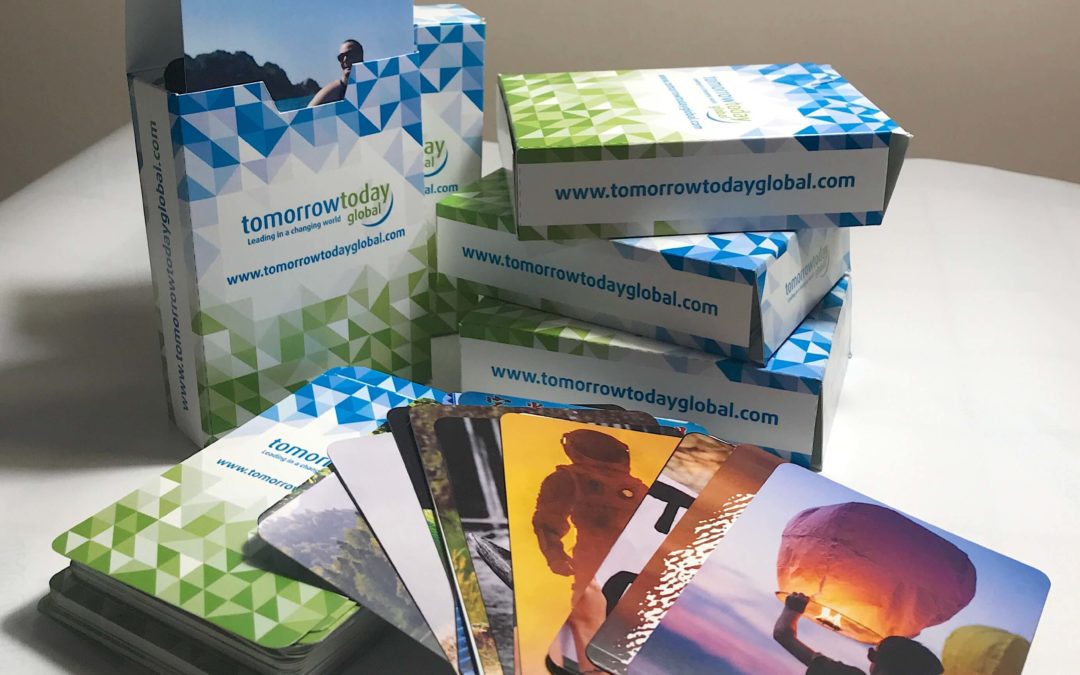
How our team use Story Cards to contribute to deeper and richer conversations within teams and organisations.
The Problem:
My team just don’t seem to engage in a manner and to a level that I would like and would expect. Our conversations lack the ‘creative spark’ that will take us to the next level and have become somewhat predictable and conformist. Besides this, I am concerned that some of the ‘voices around our table’ are, for whatever reason, hiding in the shadows.
We have some important things we need to discuss but I just don’t know how best to introduce these subjects in a way that will invite full participation and get us beyond the usual responses. So in a nutshell, how can I get my team to engage better on topics that matter?
The Solution:
Story Cards – Use pictures to form the words.
Let me explain.
It is not new knowledge that using images (or objects) to express thoughts and opinions about any topic – for example, ‘our company culture’ – sparks creativity and realises a level of expression that all too often has proven elusive. Using pictures to frame thoughts and feelings affords everyone an equal chance of expressing themselves in a manner that is somehow less threatening and intimidating. It is almost as if through the pictures we choose, we find the words for expressing things that previously had proven to be difficult. This creative approach to difficult conversations allows us to get beyond the inhibiting and more formal / traditional approaches to topics we need to discuss.
How it works:
- Lay the story cards out on the table.
- Introduce the topic to be discussed.
- Invite participants to choose any three cards that depict how they feel about the chosen topic. It doesn’t have to be three cards – it can be any number – but fewer cards are better in order to narrow the focus and prioritise selections. Make sure you don’t rush the decision-making process. Time will allow deeper thought to take place.
- Once each person has selected their cards go around and invite explanations as to why they have chosen those particular cards.
- Note synergies and extremes.
- Invite group feedback as to what has been shared.
For example: You wish to discuss your corporate culture. Ask participants to select any three pictures that best describe what they feel best depicts the corporate culture. Having given team members time to make their selections you would then invite explanations.
You could then invite individuals to select three additional cards as to what they would like the culture to be in the future. You can then compare the two ‘sets’ of pictures (current reality vs. desired reality). You will find that a rich and participative discussion ensues.
Get creative in how you use the cards. There is almost no limit as to how they could contribute to deeper and richer conversations within your team.
Recently TomorrowToday created a set of Story Cards (much like a deck of cards but with images) that can be used to ignite multiple conversations in a creative and participative manner. A simple, yet effective resource available now for you to use with your team. Why not give it a go – grab a set of the story cards here?



